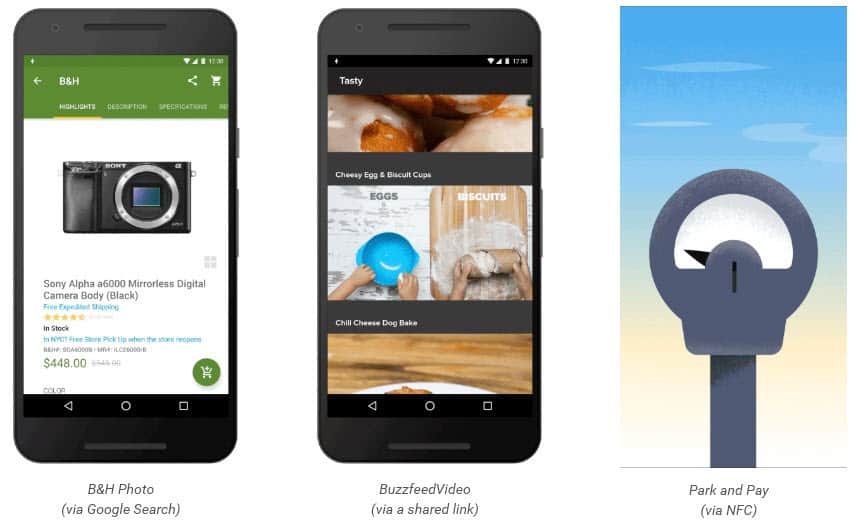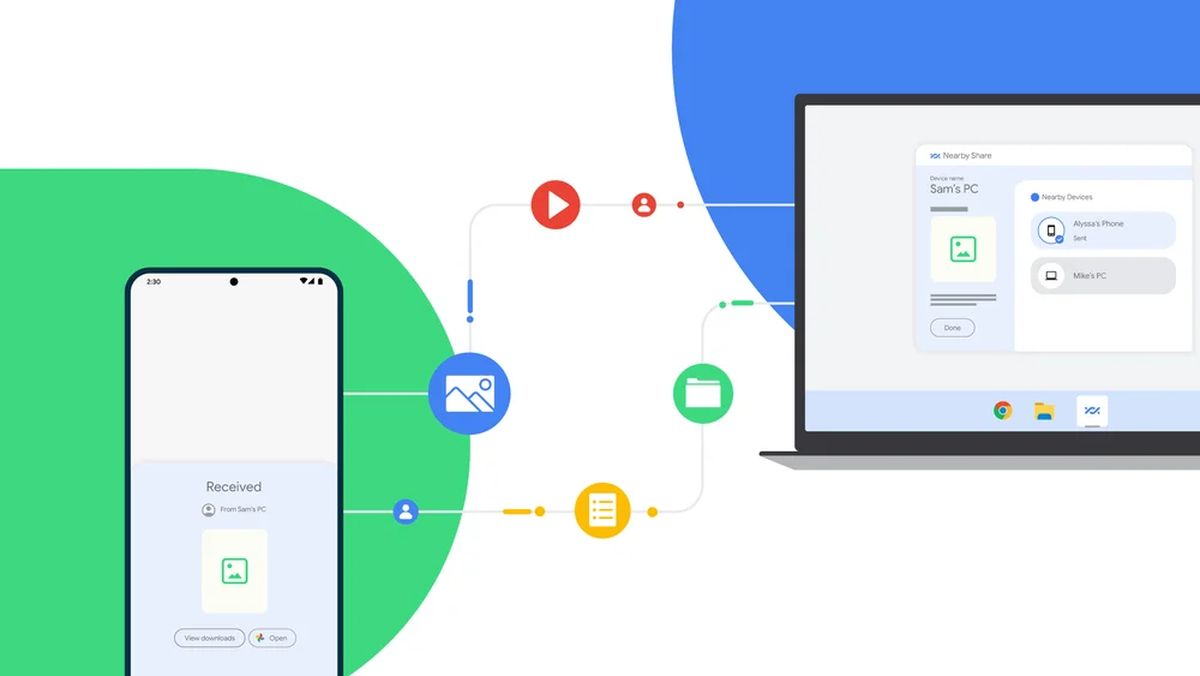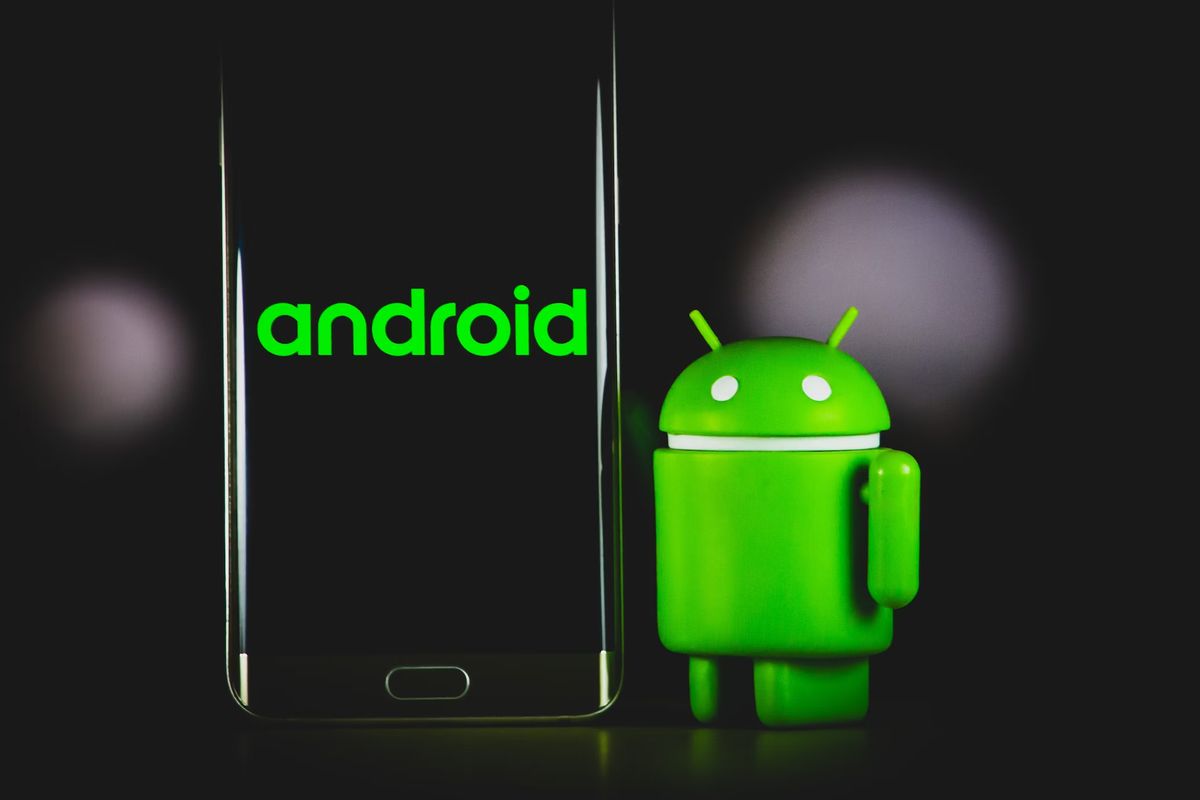Android Instant Apps explained

Google's been busy yesterday showcasing new features and products on the company's I/O Conference.
Next to the two messaging applications Allo and Duo, and first information about Android N, the next version of Android, was an interesting new concept called Android Instant Apps.
The motivation behind the new feature was to find a way to make applications easier and quicker to access on Android devices.
Google compares this to websites which you can access with just a tap or click on a link in your web browser of choice, and that it wants the same experience for apps on Android devices.
Android Instant Apps

Android Instant Apps takes the concept and runs with it. Basically, what happens is that a light version of an app is downloaded and executed when Android Instant Apps is supported by a service that is being used.
Say, you click on a link on Google Search that takes you to an online store that has an Android app supporting Android Instant Apps as well.
Instead of rendering the store page in the web browser, Android will either load the service's app if it is installed already, or download a lite version of it to the device that is used only for that occasion but not installed on the device.
Downloads are limited to a maximum of 4 Megabytes for apps in this case, and users get the same experience that the application provides without installing it. In fact, the downloaded application is removed from the system afterwards again.
That's not to say that you cannot install the app afterwards as the option may be provided by the developer of the application. Android Instant Apps does work with links but also NFC.
Google notes that it takes little development time to update existing applications to include Android Instant Apps functionality, but that the feature is limited currently to select partners.
Android users will get the feature later this year, and it won't be limited to Android N but compatible with all versions of Android starting with Jelly Bean 4.1.
Developers benefit from the feature as it exposes their application to more users, and users may benefit from it as it allows them to use part of an application without installing it which can be very useful for one-use type of applications.
It is unclear right now whether controls will be provided to turn the feature off completely, or for individual sites and services.
I can imagine that it could be very frustrating if a site you visit regularly pushes the Android Instant Application to your device each time you load it even if you don't want to use the application.
There are plenty of reasons why you may not want to use an application this way: bandwidth, permissions and functionality are probably the core ones.
Additionally, it may confuse users initially when an application opens automatically that they have not installed.
Closing Words
Android Instant Apps could push users deeper into the Android ecosystem by making them use apps instead of web pages.
The verdict is still out whether the feature will be more useful than annoying, or vice versa.
Now You: What's your take on Android Instant Apps?























Well, we’ll see. In video idea looks like good. In practice it might be not that good.
I live in a country where mobile internet quality is rather poor (and I’m not in the mood to pay a lot more for more expensive plans with good bandwidth), so what I actually need is =as less traffic as possible=. That’s why I’m not active on mobile internet, and won’t be anytime soon. For countries with better mobile internet it could make a difference. For me — rather not.
Obligatory:
https://xkcd.com/1367/
Whenever you offer convenience over security then convenience always wins. As such, I foresee this being a huge success with the masses: All those Apps that are one off’s that you never install because it would only take up space and you can’t be bothered dealing with the clean up, suddenly become viable. As for the security of that…. Well, I suppose if it was a one off then it makes the blame game harder with plausible deniability becoming easier due to the lack of evidence. The porn apps will spike through the roof! Lifeline thrown to AV vendors (and undocumented kernel abilities being removed as we speak).
It seems like a natural progression of the way things are heading with Snap Apps and X Apps coming to Linux, but to be honest isn’t this just the equivalent of the Java plugin stuffed into your browser of choice with a zipped wrapper (sorry I meant APK)? That went well on the desktop! Hey, Linux dev’s, forget Snap Apps / X Apps – do Android Apps (kind of like WINE, except make it work without all the grief and the obligatory degree in advanced computing).
I note Google has learned a lot from the Microsoft antitrust violations that occurred at the turn of the century. They started by pushing Chrome with every bit of “free” software that they could get their hands on to build market share, and as long as they sponsored Mozilla’s search function no-one could accuse them of market dominance. Even making Chromium open source so that Opera got on board was a smart move. Shame they ruined it with Chrome after the marketing department got hold of Chromium. Clearly this has been their agenda all along. So, given the fact that they are no longer sponsoring Mozilla’s search (feeling confident Google?) will these new apps be available in Chromium or will it just be Chrome? If it’s just Chrome then it’s bye bye Opera – Google market share dominance assured. No wonder Mozilla is converting to Chromium – it’s a do or die situation. (Yes, I know, it’s just the extensions at the minute, but roll the clock forward).
If you extend it even further then Android desktop becomes viable, tablets become way more useful than watching video / playing games and, hey, Adobe might run out of excuses to not provide the CC suite to anyone not running Windows or Mac OS.
Hmmm, interesting times – no wonder Microsoft is pushing Windows 10 so hard. If I were them I would make phones that ran android apps as well as Office 365.
Hey, just like ActiveX? :)
Dear tech companies, please stop with this stupid phase of continuously pushing people into using apps to view websites/online content, instead of concentrating on open mobile web browsers.
I can already see it now, in 2025 search engines will be used purely for finding IOS/Android apps, as open websites will pushed out.
Thinking about this more, it sounds like Google are trying to use their market dominance to gradually get people locked into using their apps (and their ecosystem) and in the process will eventually destroy the open Internet as we know it.
I know this sounds like an over-reaction on my part, because at the moment these are just baby-steps, however if they are successful in moving the masses away from the open internet and gradually using apps for everything instead of open/universal web browsers, then once technology progresses and desktop’s disappear from mainstream usage we will eventually be left with two companies (Google and Apple) who control pretty much the whole world wide web, as the vast majority of content will require an app from their stores.
I think I prefer the days when everything was completely open and all that was required was Web browser, Email Client and Usenet Client.
Tim, By all means I wasn’t trying to split hairs or anything, I just wanted to get better insight to what you were saying. What confused me was that the protocols back then are the same now, but after reading your detailed post I now better understand what you were trying to say. Not so much the protocols, but the usage of them as messaging mostly (with the exception of business) has moved to proprietary vs something like email which can do (almost) everything and accessed by anyone.
Personally, I do agree with you, though when I first started using the internet in the 90s, I was mostly locked to AOL, because that’s where my friends were. I am sure nowadays my friends use some kind of app but I resorted back to just using email and sms because having to install 90 different apps to talk to 90 different people is annoying.
I am also moreso a fan of w3c complaint web sites and web apps than any kind of proprietary methods, as I am not a fan of being locked in one thing. That’s why it annoyed me when Google said they were dropping XMPP and moving to hangouts. I personally think Google is the primary leader in causing the internet to lack privacy and focus more on tracking.
Have to admit though, I do also miss the old internet was well, but I think mostly because, as you said, it was very experimental, yet very special. Sure we had different browsers where some might not render a site properly in one browser vs the other, but damn was it an adventure. I think what I miss most was the new creativity that was being shown. It was when people did make a web page, they usually hard to start from scratch, so whatever site you went to, you knew it was going to be different than the last. Now it feels like majority of sites are just all blogs or wordpress with a different coat of paint. I think that’s why I get a little smirk when I land on a site that was obviously made over a decade+ ago, because it is different than most other common sites out there.
Anyway, thank you again for elaborating on your comment. It was a very enjoyable read.
In case you’re not just trying to be pedantic by half-quoting to split hairs, in so much as email was based on protocols, not which application or OS you used. Email protocols were made to standards that anyone could and were using and were also cross platform. Therefore people could use whatever client they wanted (even make their own) and everyone could easily communicate with each other, in their client of choice, operating system of their choice, using those protocols. No “install AAA app so I can send you a message”, then someone else saying, “hey, install BBB app so I can send you a message”, “Oh I can’t, I have a different phone to you”. All different apps for sending text/photos/etc. depending on who you’re communicating may give different choices, but they are closed and it’s not uncommon to be even platform specific and so you end up with lots of people all using different ecosystems, that have no particular standards and are incompatible with each other. Email wasn’t like that.
With UseNet, you only needed a single account to communicate with people in thousands or hundreds of thousands of groups covering every topic you could thing of. You didn’t need to sign up to one website for one subject, another website for another subject, etc. The protocol was made to standards that meant you could use whatever client you wanted, on whatever OS you wanted, and you could go wherever you wanted without needing to sign in to different groups and could even create a new group yourself if you were so inclined.
Then Web browsers, and I presume this is what you were really getting at, in particular the Netscape vs Internet Explorer wars. But HTML was pretty universal and one of the things that was particularly enticing about the early World Wide Web was the abundance of websites made by ordinary people from their home computers who were just enthusiasts that were incredibly knowledgeable on certain subjects. With those webpages content was king and the pages themselves were mainly HTML pages and pictures, which anyone could create, publish and view. Some of them were even coding their websites by hand instead of using WYSIWYG editors in order to help them to better learn HTML and web programming languages (which wasn’t always a good thing because it meant sometimes they would animate things, because, well just because they could). Unfortunately then money came along and most of them ended up being pushed out by commercial websites and that’s probably when things got complicated because things like tracking was required. Some of those early websites I still miss even today.
Anyway, for what it’s worth, browser wars aren’t only restricted to the past, it’s still going on today, Periscope for example tells you to install Chrome, Safari or Firefox to watch a video. But at least in the days of Netscape Navigator and Internet Explorer, the World Wide Web was still pretty new and things were experimental. But the recent trend of continuously pushing consumers to using Apps instead of mobile web browsers for web content is a different kettle of fish because not only should we know better now, but at this point in the game it could easily end up with a scenario where eventually the World Wide Web that should be open and universal for all to use, could become OS dependent as web developers are replaced with app developers and mobile websites get neglected in favour of apps, until abandoned altogether once app adoption is high enough. If mobile web standards have shortcomings, then tech engineering companies should work towards creating web standards for all, that overcome those shortcomings in a controlled and fair way, not use it as an excuse to at best use apps to harvest as much consumer data as they can due to the increased permissions apps allow or at worst use their dominant market share to work towards locking unsuspecting consumers into their ecosystem whilst they have the chance, in what I would consider to be an uncompetitive move.
“I think I prefer the days when everything was completely open”
When was that? because I don’t remember a time when everything was “completely open” after the internet started.
sounds like forced (by google) version of “progressive apps”
But Martin, if I used the browser to visit a site who’s app I already installed it means I don’t want to use the app. If Google is going to redirect me to the app again and again then what’s the point of a website anyway?
Instant apps does sound good but downloading an app again and again would be bad for those of us with low bandwidth.
Google should provide an opt out option for this if they are thinking to implement it.
Android Instant Apps = portable apps
So, Instant Apps will allow code that you didn’t install and authorize to run by clicking on a web link?
I’m sure Google will implement controls as to what apps are allowed to do this, but it sort of seems like a remote code exploit waiting to happen